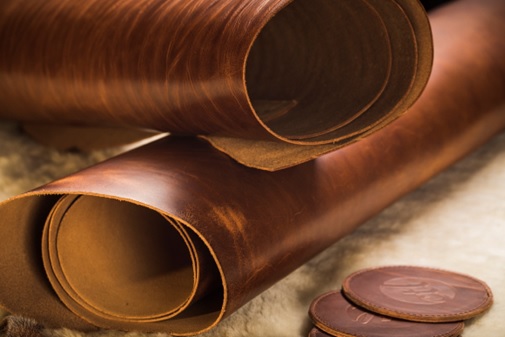Care & Maintenance

Leather is a versatile and durable material with a wide range of desirable attributes including, flexibility, strength, and breathability. It can also be treated to be resistant to both heat and water.
Leather is very comparable to human skin, and so is the way to care for it. Just like skin, many problems that arise in leather furniture, such as oil accumulation, dryness, or cracking, can be prevented with proper care.
With proper care, quality leather products will maintain their look and feel over long periods of time. However, the correct method of care may vary depending on the type of leather.
Leather is a pricey investment and knowing how to clean leather will keep your products looking great. The factors of durability, strength, and an array of colors explains why leather is a popular choice. Understanding the process of how leather is made before cleaning leather may prevent any costly mistakes that cannot be undone. After learning the tips for how to clean leather and putting the cleaning methods into practice, there is no reason that leather furniture should not last for years and years.
It is important to keep in mind that not all leather products should be treated the same. Each tannery and leather manufacturer has their own specific recommendations when it comes to cleaning and conditioning their leather products. Be sure to seek the manufacturer’s specific instructors when caring for your leather products.
Use the following tips to care for your leather furniture and garments:
- Regular dusting and wiping for most leathers is sufficient to keep them clean. Occasional wiping with a moist cloth is also recommended.
- If the leather becomes soiled with beverages or other liquids, a light damp cloth or chamois with lukewarm water should be used to blot out the stain. If this does not work, a mild soap and water solution should be mixed and then blotted to remove the stain. The leather should then be dried gently using a cloth. Some leathers may not be suitable for this type of cleaning, so it always recommended to spot test this method.
- For full aniline leathers, regular vacuuming with a soft brush is recommended. Do not use water or other liquids.
- Leathers with no protective film on the surface such as nubuck or suede leathers, are more susceptible to soiling and staining. For these leathers, blot excess liquid immediately with a clean, absorbent cloth or sponge. For grease, oil or butter stains, do not use water to remove the stain as this will only drive the stain deeper. It is best to wipe up any excess oil with a dry white cloth and then leave it alone to dissipate into the leather.
- If you plan to use a leather cleaning kit, the directions on the package should be followed.
- Never use shoe polish, vinegar, saddle soap or any other chemical substance to clean leather. If you have damaged leather, contact a professional cleaner.
Leather Cleaning No-No’s
The porous nature of leather makes it difficult to clean or remove stains once ink, water, or wine penetrates the surface. As tempting as it may be to use harsh cleaners or soaps, refrain from using them or suffer the consequences of further damaging leather furniture.
Oils such as mink oil, furniture polishes, and varnishes can severely damage leather and can make the leather sticky. Use caution when polishing surrounding wood furniture or if the sofa or chair have wood accents with furniture spray or wax.
Water can dry out leather causing it to become brittle and crack. Use water with caution and only with a cloth that has been lightly dampened. The ink from newspapers can be transferred from paper to leather leaving unsightly ink marks over leather. Never leave a newspaper lying on a leather chair or sofa. Removing ink stains is nearly impossible.
Unfortunately, many home remedies for stains may remove or alter the color leaving another spot. Check with the manufacturer for small pens that can be used to color in discolorations.
The last thing you want to do is ruin an expensive piece of leather furniture. If you are unsure of how to clean leather, search for a professional cleaner who can either give you suggestions or do the cleaning for you. Always follow the manufacturer’s suggestions and purchase any conditioners or the leather cleaner that the company carries or recommends.
Leather is a beautiful alternative to fabric-upholstered furniture, yet also a cleaning enigma. When it comes to daily or weekly cleaning, the vacuum performs the task. A deeper cleaning requires a mild soap and a damp cloth. Knowing how to clean leather beginning the day your new leather sofa arrives in your living will keep it beautiful and lasting longer than you may want it to.
Please contact us if you have further questions or concerns.
Additional Resources
- Click here to download Common Practices for Wax & Oil Pull-up Leathers document
- Click here to download Removing Wrinkles, Marks and Creases in Leather document
- Click here to download Leather Care & Maintenance document
- Click here to download Hair on Hide Care & Maintenance document
- Click here to download CTL Leather 101 – Overview document
